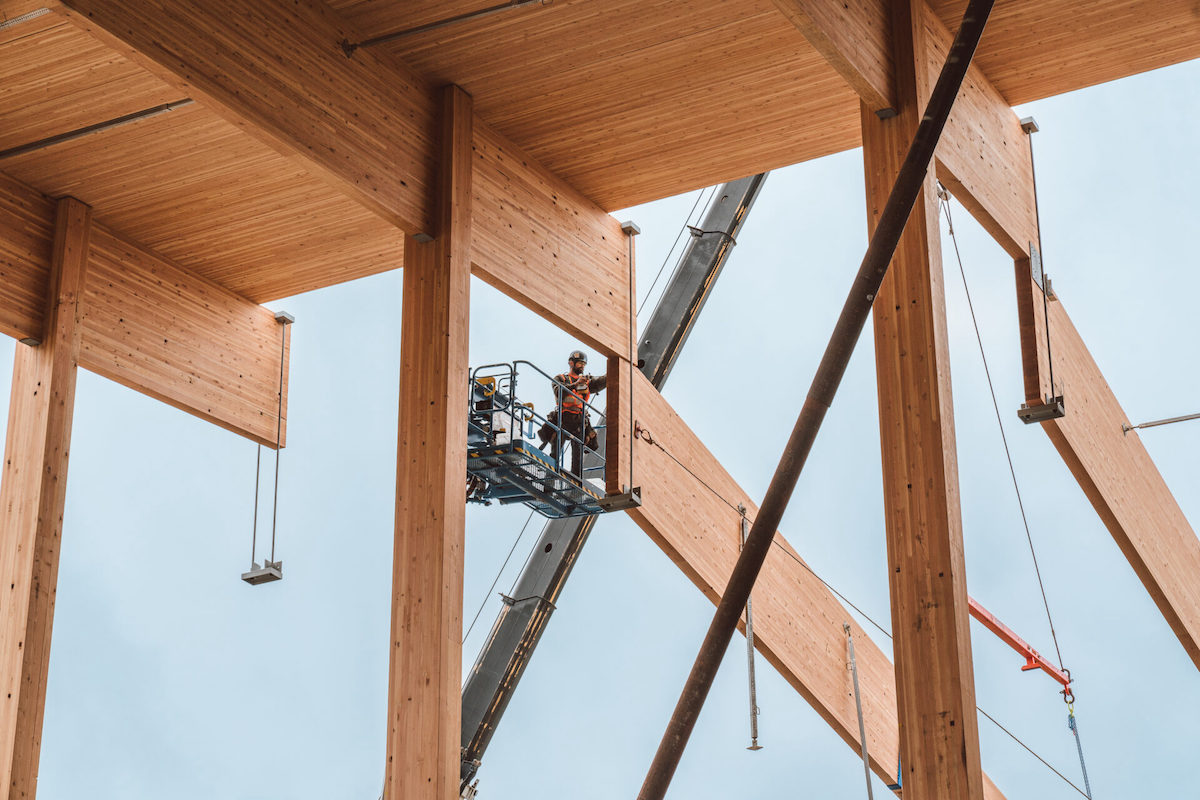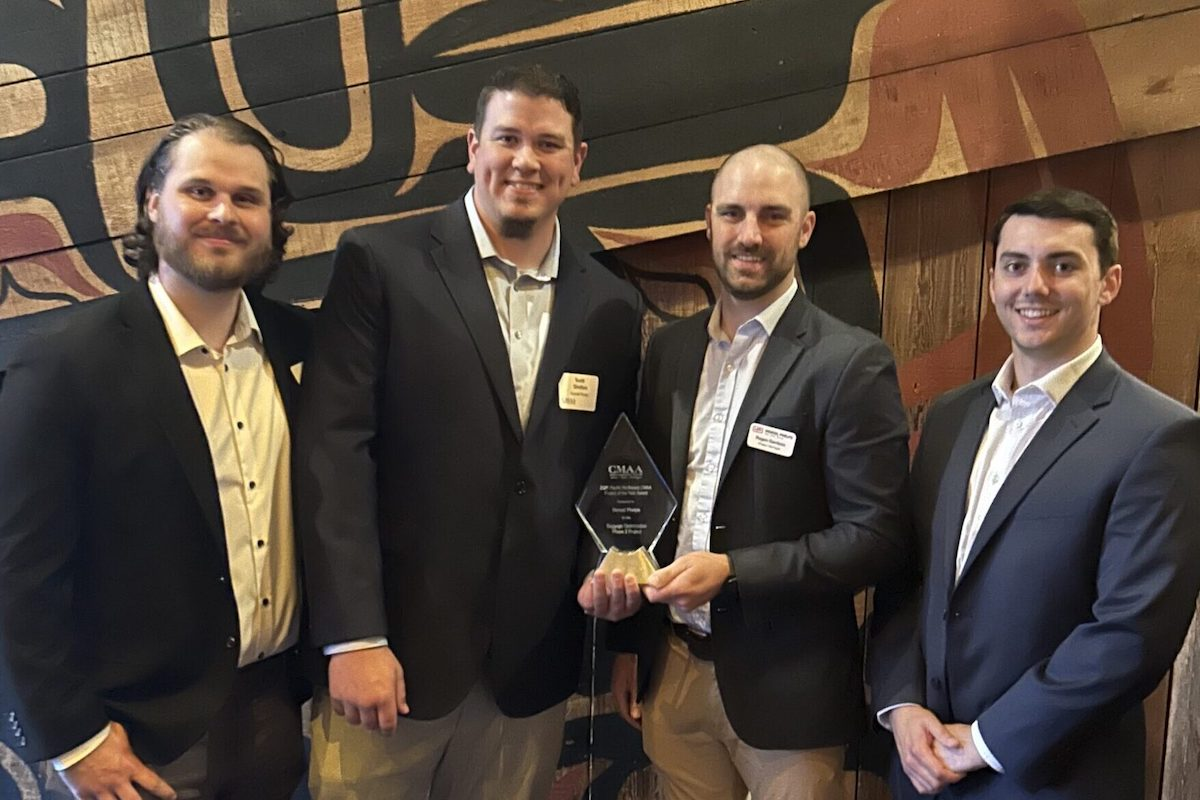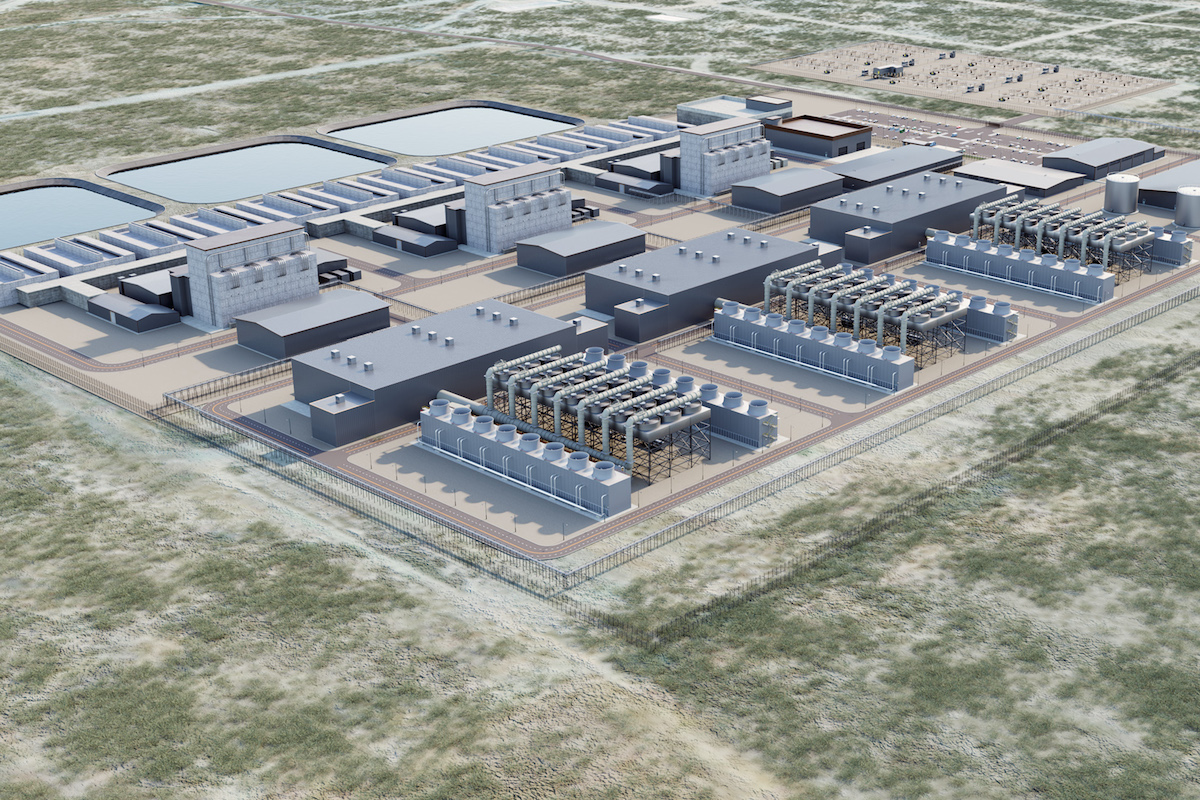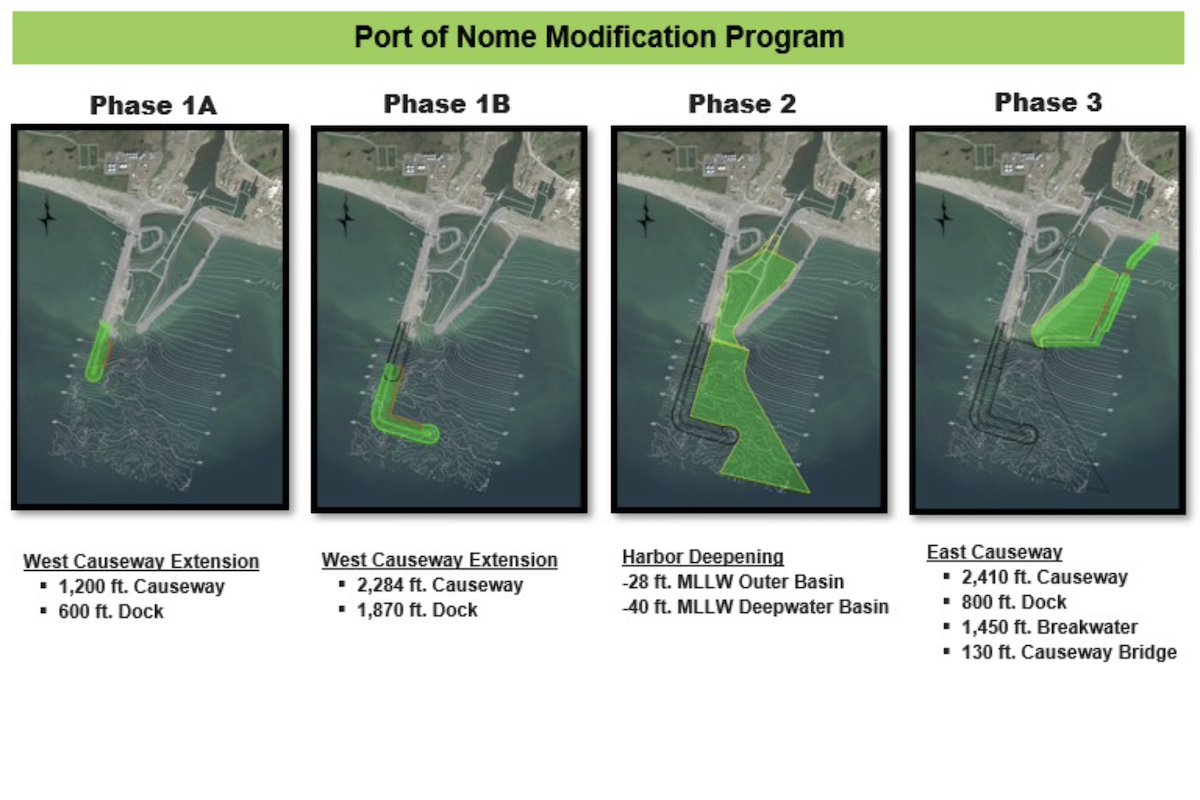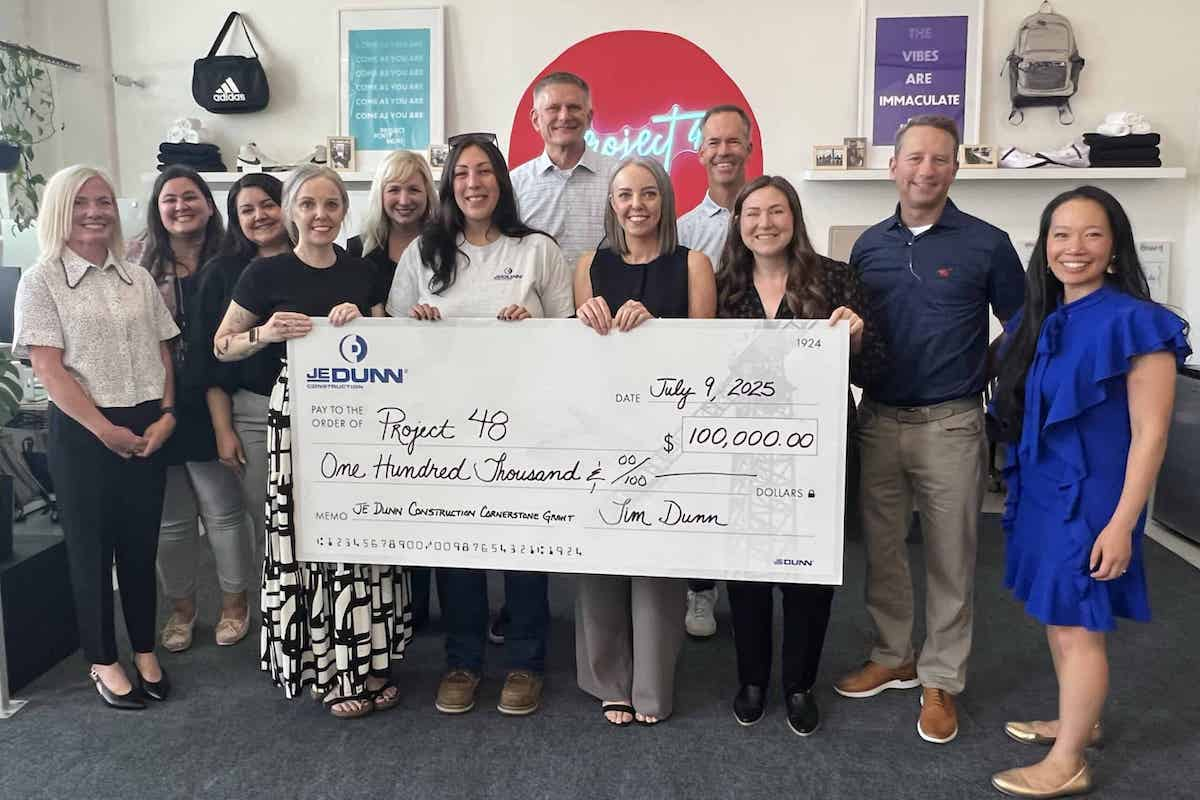Clark Construction Group is leading design-build efforts on the $968-million capital project, which is among the largest and most complex ever undertaken at the airport. The company, working in close collaboration with the Port of Seattle and other stakeholders, recently completed a milestone in the construction of the project: moving and hoisting the center section of the pedestrian walkway into place. The complex operation required years of planning and coordination to execute safely. The taxi lane beneath the walkway also recently reopened, enabling aircraft traffic full access below the structure.
One of three primary structural components, the walkway’s center span measures 320 feet long — equivalent to the length of a football field — and weighs more than 3 million pounds. Clark elected to prefabricate this section of the walkway at an airport cargo area three miles north of the IAF to improve work area safety and minimize the impact to ongoing airport operations. This approach enabled the team to streamline fabrication efforts and provided them with the ability to identify and troubleshoot potential challenges off site. It also allowed them to perform sensitive operations, such as the installation of the walkway’s stay cables, in a controlled environment.
Once prefabrication work was complete and the center span was fully loaded with its glass and metal panel façade, Clark utilized self-propelled modular transport devices (SPMTs) to move the structure into place. Operated by global heavy transport expert Mammoet, the specially designed hydraulic trailers can move in any direction and feature axels that telescope independently of one another to help evenly distribute weight and keep loads flat while moving over uneven terrain.
“We knew that any major movement to the steel assembly could result in stress to the structure,” said Brad McDermott, Project Executive at Clark. “We needed a transport solution for the walkway’s center span that provided a safe, stable ride from beginning to end. The SPMTs helped us achieve that goal.”

| Your local Volvo Construction Equipment dealer |
|---|
| PacWest Machinery |
The move was the result of months of planning among the Clark-led construction team, airport operations and the Federal Aviation Administration. Traveling at walking speed, and with a caravan of escorts, crews navigated the circuitous three-mile route from the cargo area down the airport’s center runway to the IAF. The three-and-a-half-hour operation took place during periods of heavy rain and as airplanes taxied, landed and took off on nearby runways.
Hoisting the 3-million-pound center span into place was another technically complex maneuver. Erection crews leveraged the walkway’s end spans to support the weight of the lift. Prior to the lift, structural engineer KPFF adjusted the walkway’s side spans to account for the weight of the center section, projecting a deflection of 7 3/4 inches once the structure was fully loaded. Using four strand jacks anchored to each end span connection, they hoisted the walkway to its final position 85 feet above the airport’s taxi lane. The strand jacks provided the strength needed to move the structure upward and gave the team greater control over the lift.
With engineering tolerances between the center and side spans as small as one inch, it was imperative to understand how the three major sections of the walkway would come together before they were connected on site.
“We knew we had to get this right the first time,” McDermott said. “We spent the last year and a half working hand-in-hand with the port’s construction and operations teams, our engineering and trade partners and third party experts, as well as leveraging our own virtual design and construction and field engineering teams, to carefully examine every detail of this operation to ensure a successful outcome.”
Part of that effort involved engaging Structural Engineer Allyn Kilsheimer of KCE Structural Engineers to validate the team’s technical approach through a peer review. The firm also leveraged survey technology to fully understand existing conditions on site, including laser scanning the walkway’s center and end span connections, and airport’s center runway. Ultimately, the team’s planning and execution of work resulted in a fit-up within 3/8 of an inch, enabling the walkway lift to occur safely, and without interruption.

| Your local Metso Minerals Industries Inc dealer |
|---|
| PacWest Machinery |
| Westate Machinery Co |
“This was a highly technical operation magnified by the fact that we are performing the work on an active airport campus,” said Brian Ahern, Vice President at Clark and Project Director for the IAF. “Our primary objective was to ensure that we executed the work according to our plan and did so safely, with minimal impact to airport operations. It took everyone — Clark, the Port and our project partners — working together to ensure we hit the mark.”
“This was a true team effort,” said David Soike, Chief Operating Officer for Port of Seattle. “Complex operations like the elevated pedestrian walkway move and lift aren’t made possible through the efforts of one individual; they are the product of great teams. The level of commitment and collaboration exhibited by the entire IAF project team on this operation was really second to none.”
Now fully supported, SEA’s walkway serves as a link between the airport’s South Satellite and the new International Arrivals Facility. It is the world’s longest pedestrian bridge over an active airport taxi lane, eclipsing London’s Gatwick Airport’s Pier 6 Connector by 120 feet. It is also among the tallest structures in Seattle, surpassing the Space Needle by more than 150 feet when tipped on its end. Clark and trade partner The Erection Company will continue welding operations on the walkway and begin exterior cladding work this spring with the goal of delivering the walkway structure and associated International Arrivals Facility to the port this fall.
SEA is the eighth busiest airport in the U.S. Of its 51.8 million passengers last year, 5.7 million were international travelers.
“We’re helping bring to life a one-of-a-kind structure that will improve the passenger experience and serve as a welcome symbol for international travelers visiting and returning to the Pacific Northwest for decades to come,” Ahern said. “I’m proud of what this team has been able to accomplish over the last few weeks. I’m prouder still that we’ve been able to do it all with safety at the forefront.”

| Your local Somero dealer |
|---|
| American Construction Supply |















